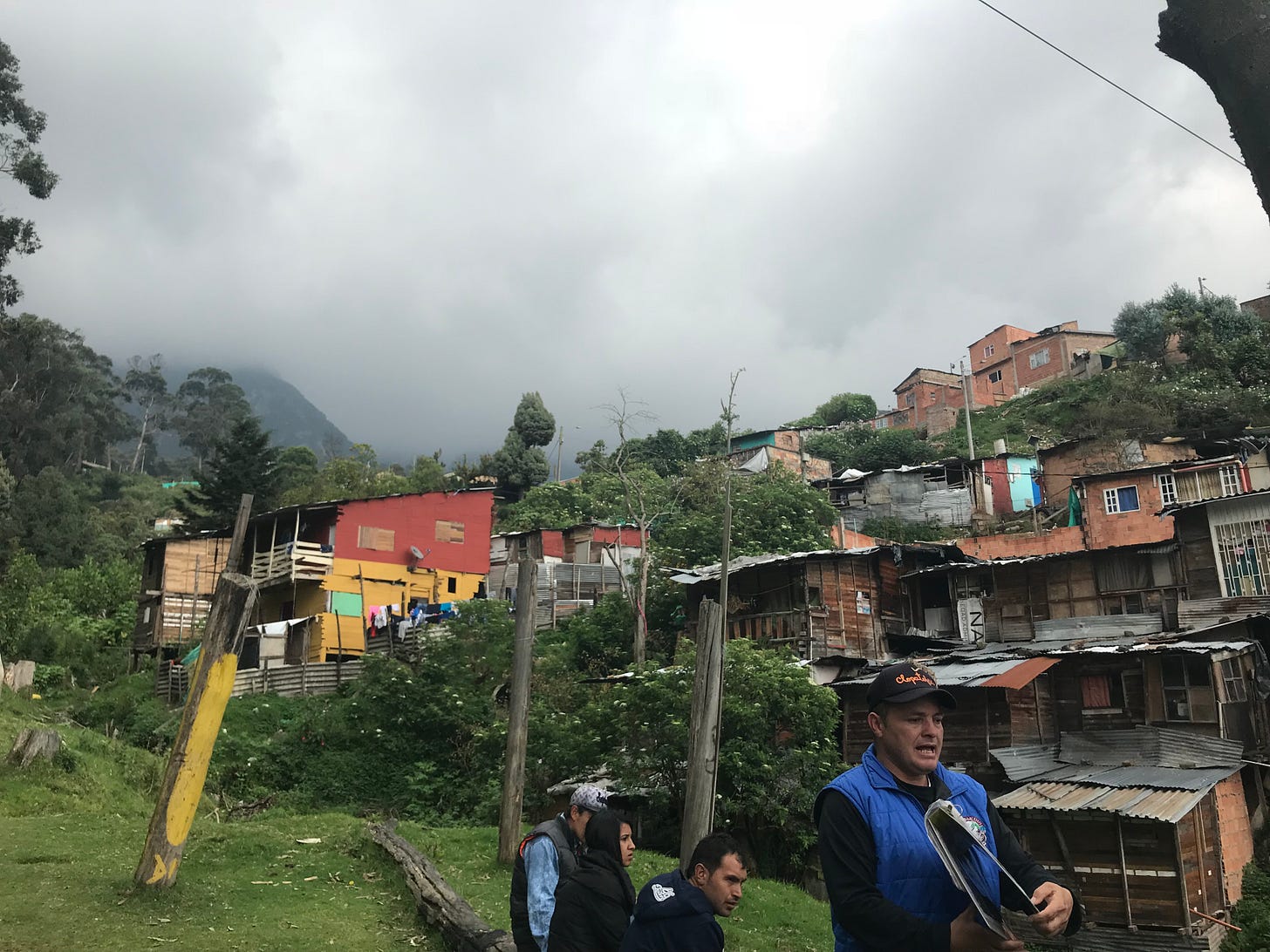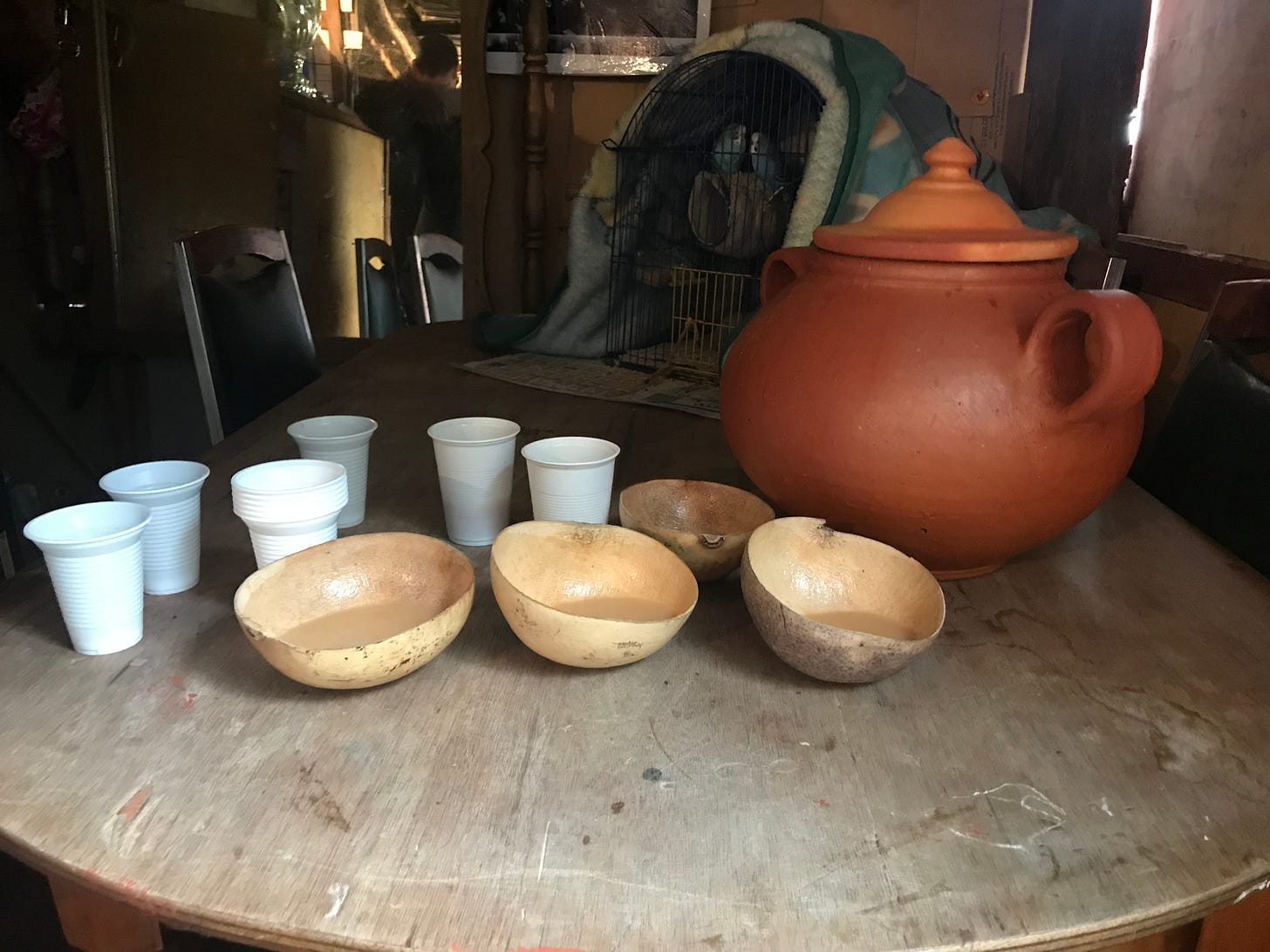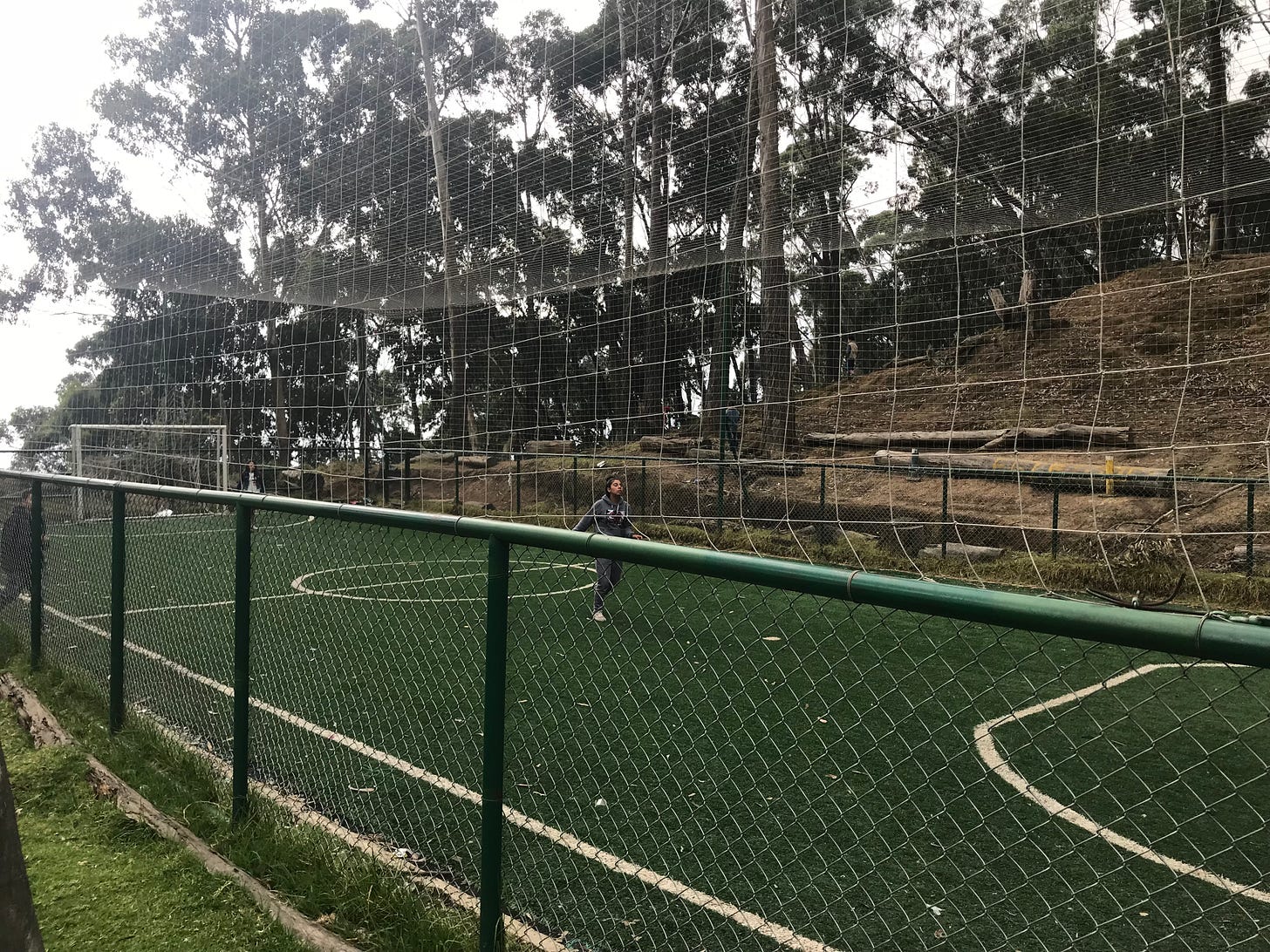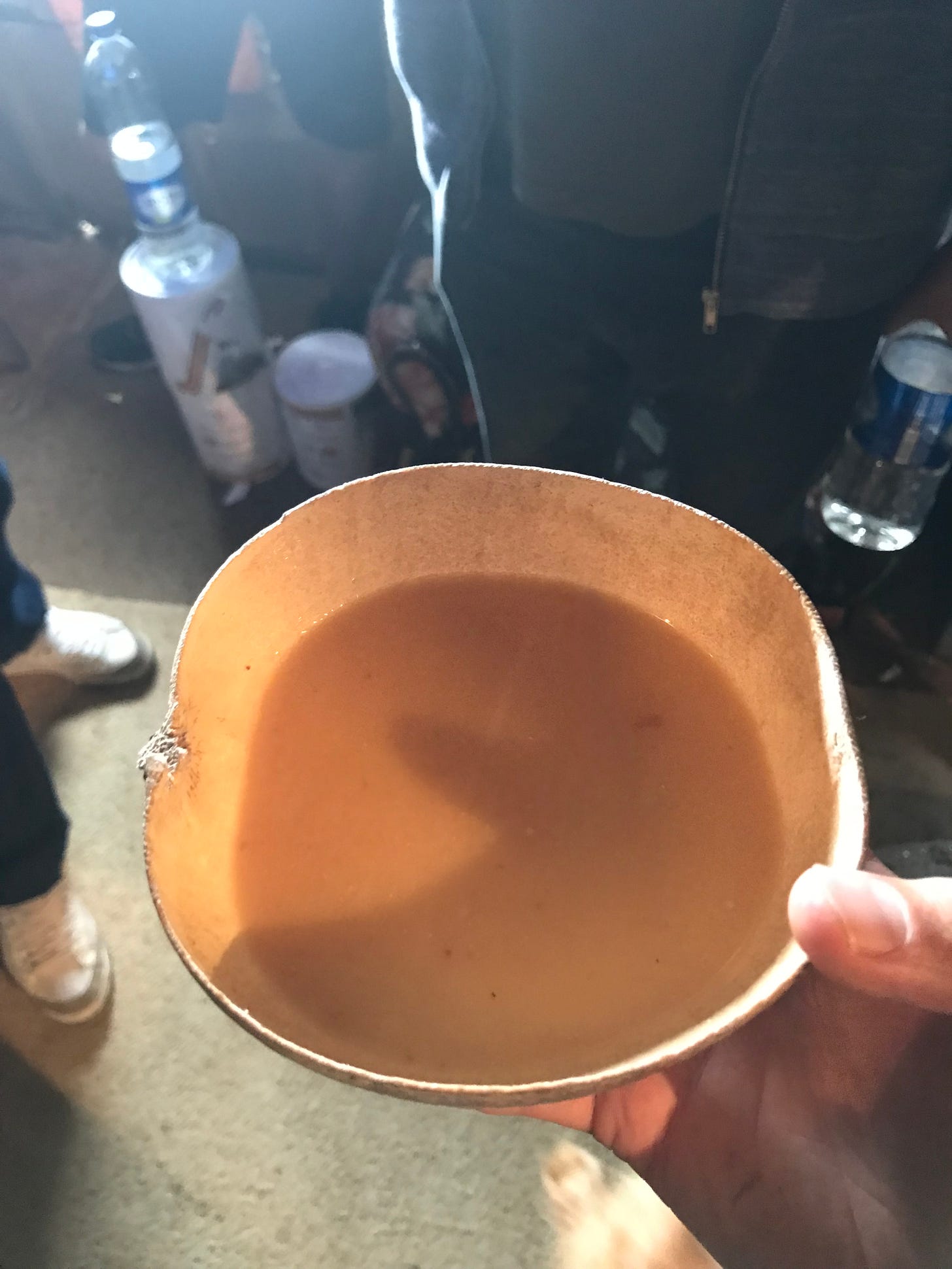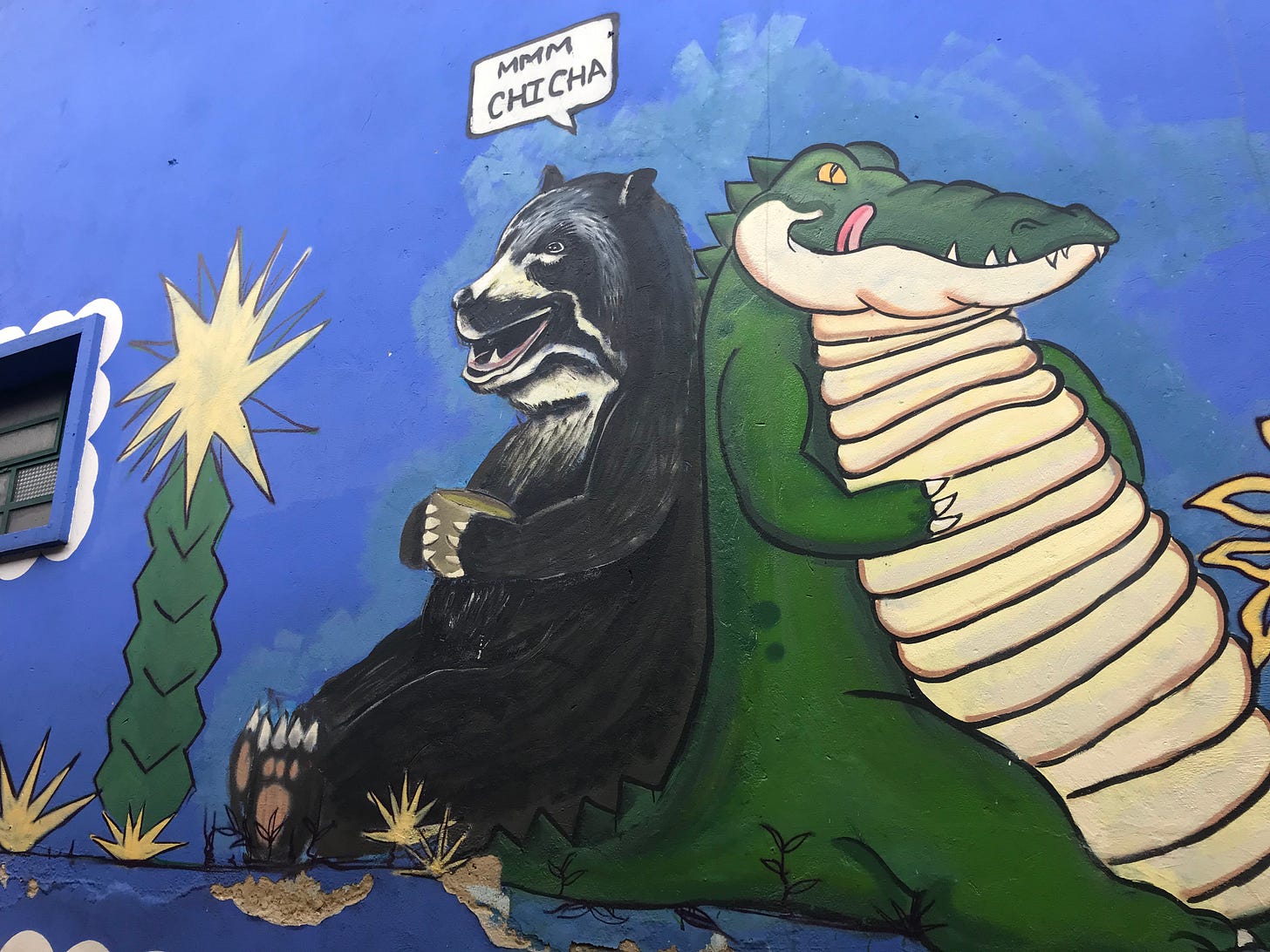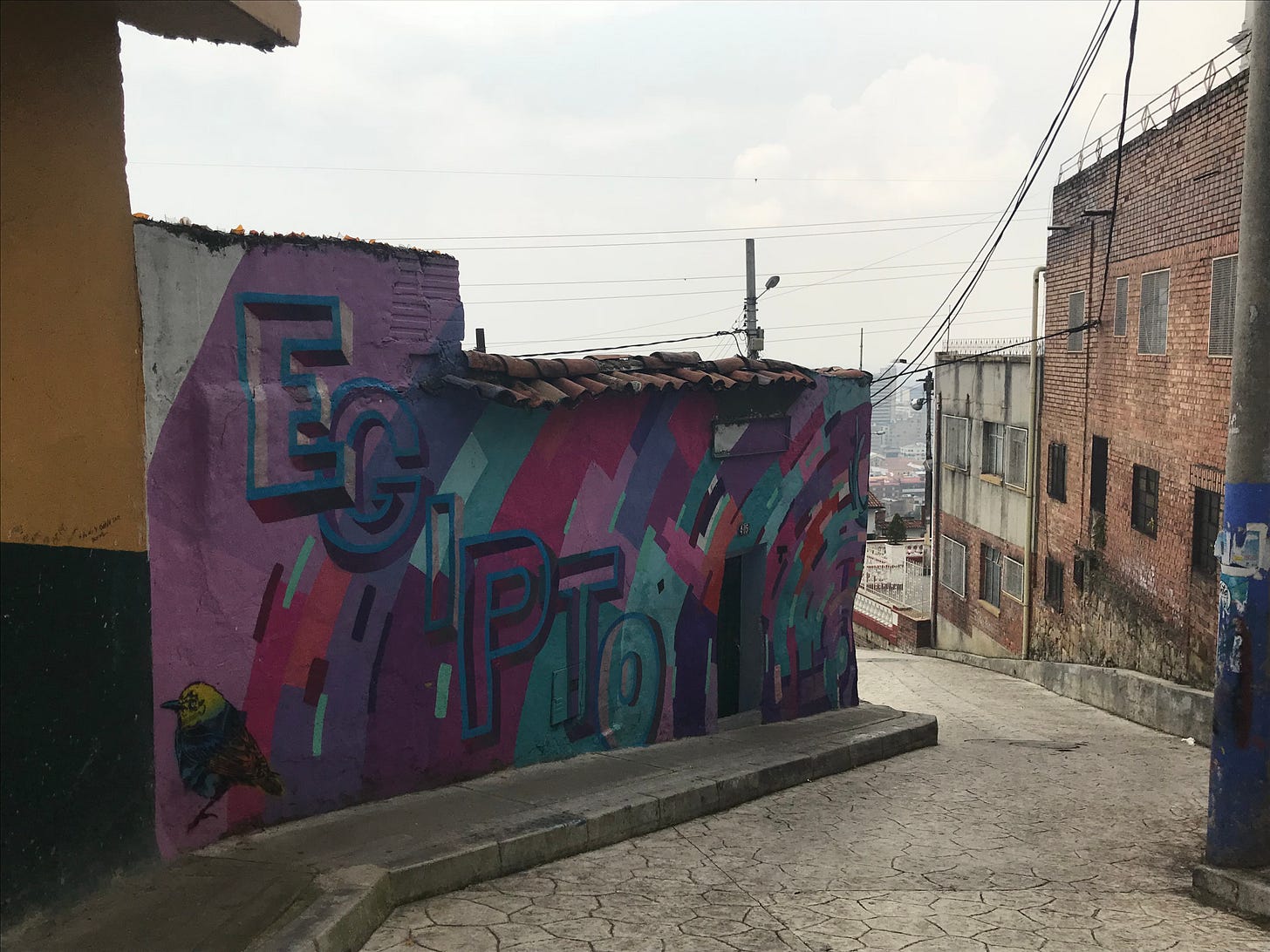Hey reader,
The most beautiful aspect of travel is the unexpected. Today’s dispatch is a reflection on a story I reported in Bogota, Colombia, in October of 2018. I had not intended to visit Bogota’s Egipto neighborhood while in Colombia — I headed to the country to attend a digital nomad conference in Medellin.
But after buying a ticket to the conference and joining the related Facebook group, I received an email from a representative of Impulse Travel. She asked if I would be interested in covering how former gang members were leading a neighborhood revival effort in a local barrio that had long been afflicted by rampant gang violence.
I knew this was an important story to tell, and that I’d never have another chance to tell it. So on my first morning in Bogota, I hopped into a car that had come to pick me up from my hotel, and off I went to Egipto.
Below is the account of what happened.
Community Shoutouts
A warm welcome to the 9 new subscribers since the last dispatch! Here you’ll find a collection of stories built around the remote work lifestyle, by and for lovers of the mountains. You’ve joined on “adventure narrative” week, so grab a cuppa and buckle in.
My podcast No Blackout Dates featured New York Times 52 Places Traveler Sebastian Modak this week. Sebastian offers a ton of great advice and an honest reflection on spending a year gallivanting around the globe. Check it out here.
I have exciting news to share: You can now read Mountain Remote in the new Substack app for iPhone.
Don’t cross the street: A day in Bogota’s most violent neighborhood
“On the other side of that wall, they’re always looking for white meat,” Jaime Roncancio told me, pointing to a 10-foot-high corrugated tin wall just uphill from where we stood. That fence divided Bogota’s Egipto neighborhood in two — Calle 8 and “the other side” — and served as a physical demarcation of progress in the ongoing battle against drugs and corruption in Colombia’s capital city.
Roncancio grew up here. He’s spent his whole life in Egipto, Bogota’s most violent neighborhood and also one of its most beautiful. Along Calle 10, where he lives, homes and shops are covered in bright and detailed street art depicting the neighborhood’s struggle for peace, its pride in self-sufficiency, and its affection for Chicha, a fermented alcoholic drink made of corn and brewed in residents’ kitchens.
I didn’t have to guess what he meant by “white meat.” The message was clear — don’t go over there.
The wall in question. I didn’t venture across it.
We were a few blocks from Roncancio’s house. I was with a group of seven who alongside myself included a guide from Impulse Travel, three travelers from the UK, a Colombian from Medellin, and a German college student working spending her junior year working in Bogota.
The Egipto neighborhood rises up a hillside on Bogota’s eastern flank, the famed Montserrate peak and historic temple rising in the distance. It is simple and beautiful, with single-story buildings running upslope and straddling narrow streets of laid stone. Not far from the trendy La Candeleria and university districts, lined with nightclubs and hip cafes peddling bowls of Ajiaco, Egipto is a world apart from the bustling city center.
Here, gang violence — including kidnappings, murders, and extortion — was commonplace for 27 years up until the early 2000s. Rival gangs staked territory and split the barrio in two. More than 1,200 killings happened between 1990 and 2002.
Even now, most locals never venture here.
Roncancio used to be a part of the violence. He’s been involved in crimes up to and including murder. He spent years behind bars. Family members and friends of his have been killed, and have killed. For drugs, for money, for status and pride — all factor into the situation and make it hard to evict entirely.
He was eight years old the first time he took a bullet. His body is riddled with wounds from stabbings and shootings. If you ask, he’ll show them to you.
Jaime Roncancio explaining the art on the stairs.
He stands in front of us now as a reformed man. An entrepreneur who launched the Breaking Borders Tour to do exactly what its name suggests — break down the borders between Egipto and the rest of Bogota, and indeed, the rest of society at large.
His tour is the result of time spent in a tourism program for former gang members at the Externado University of Colombia. While “slum tourism” — putting poor neighborhoods affected by violence and corruption on display for visitors seeking a “cultural experience” — is prevalent worldwide, including here in Colombia, the goal of the Breaking Borders Tour is to use the money brought in to stabilize the neighborhood rather than line a tour operator’s pockets.
For $37 and a handful of Colombian pesos in tips, Roncancio leads walking tours along Calle 10 that include descriptions of the street art (“it reflects who we are as a neighborhood, where we’ve been”), the local primary school (“the best one around, this is the pride of the neighborhood”), and neighborhood haunts including El Cuadrado, a central square with a shop-cum-cafe.
I have no way of knowing how much of that money goes back into Egipto’s reform. It is possible that some — or even most — is siphoned by others in the neighborhood, including across Callera 1 where crime still runs rampant.
But I can tell by the pride in Roncancio’s face, and in the faces of everyone I meet during the day I spent here, that the net benefit to Egipto is positive. At the very least, he is providing for his own family in a non-violent way.
The most inspiring part of the tour, for me, was meeting a local woman who had lived more than 80 years in Egipto. A nurse, she had spent the decades of violence serving as a sort of field medic, treating wounded gang members and citizens who couldn’t afford to seek proper medical care, or who were afraid to do so for fear of legal repercussions.
How someone who has seen what she has can wear a smile to greet visitors is beyond me. I concluded that this ability must come from having lived a life of purpose, one where she undoubtedly left a positive mark. She recalled the days of violence with regret but conviction, as a crowd of neighbors gathered to listen.
I was in tears listening to her talk. Looking around, I noticed I was not the only one. She had held people as they died.
A portrait of a hero.
At El Cuadrado, we watched a group of local teens perform a few rap songs.
We then went to Roncancio’s house for a taste of his homemade chicha. Roncancio built his home by hand, staking his claim to the property from his authority in the area as much as from any financial input.
Shells of chicha served from a clay pot in Jaime Roncancio’s. Could be as trendy as mezcal someday . . .
“My two kids sleep over there in that room,” Roncancio said, pointing to a corner of the house separated by a dark curtain and a small abutment of clay. His own bedroom was on the home’s other side, directly adjacent to the kitchen and living space.
Shell of chicha in hand, I stared out the tiny window in Roncancio’s living room, which offered a view of the sprawling city below. The drink tasted of the earth, thick like a smoothie and with a sweet finish that mellows the sharp bite of maize. The sun shined over the city as I looked out at it, illuminating the skyscrapers and casting them in sharp contrast from the deep green mountains to the east.
The view stretched for miles. The entire metropolitan area of Bogota, home to 11 million people, was visible at the foot of the Andes Mountains. It was beautiful — rivaling any from Aspen’s West End or a Manhattan highrise.
I felt self-conscious of my own home, small by American standards but incredibly luxurious compared to this. And about how my wife, Alisha, and I intentionally avoid common amenities like cable TV that are a status symbol here. Who are we trying to impress, and why?
Humbled, I finished my chicha and set the shell down on the kitchen table. Roncancio invited me into his home, where his family was relaxing, and offered a drink and conversation. Would I have done the same for him, if he were to arrive in Colorado?
I’m not sure. Yes, he was being paid to do it. But regardless of the financial benefit, the lasting impact of his venture is that it leaves hope for the neighborhood’s future.
Remote Focus: Bogota’s Egipto neighborhood
The local primary school, funded in part by the Breaking Borders Tour.
Find a neighborhood in Latin America without a soccer pitch, and you’ve found that you’re not in Latin America.
Throw the coin in a hole, win all the coins. Jaime breaks down the best way to toss.
In Bogota, it was maybe noon. But it was 5 O’clock somewhere.
Cheers.
Egipto Street Art
This edition of Remote Focus deserves a second section specifically for the barrio’s street art.
This mural is meant to symbolize the coming together of different tribes. Over chicha, of course.
Some cities have organized street are tours. But the art here in Egipto is better.
Three Kings Day is celebrated on January 6 in Colombia, symbolizing the Christian tale of the arrival of the kings to Bethlehem. Here, it’s referred to as 6 de Reyes.
I have never been anywhere with more neighborhood pride.
I drink a lot of coffee putting Mountain Remote together.
Mountain Remote news and further reading
For more on my time in Egipto, check out this article I wrote for Matador Network.
In the not-to-distant future, Nimo’s smartglasses could eliminate the need for remote workers to even carry a laptop (via Wired).
For 2.5 years, I have written a weekly column for Matador covering green tech and developments in the fight against climate change. I’m excited to be moving that column to Mountain Remote in the coming weeks. Here is the most recent dispatch, from last week.





